
Wheat Paste experiments
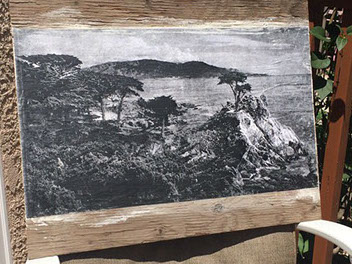
I have been experimenting with printing images out using a cheap Xerox paper printing process and then using wheat paste to glue them down to old reclaimed plywood boards. Below is the initial instructions I followed in creating the wheat paste. Above is a short video showing my process.
-Greg Dyro August 2015
My next step is printing on Hahnemuhle Rice paper using color images then mounting to the reclaimed wood.
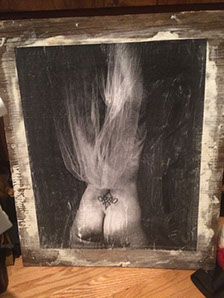
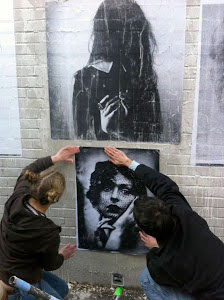

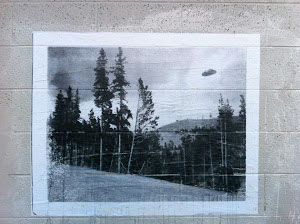
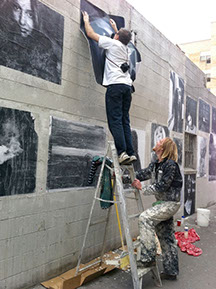
Wheat Paste Instructions
its a carbon electrostatic print process. Most Xerox copy shops and office print centers have them for engineer and architects drawings/ plans to be printed. Its called a Architectural Plotter Printer .. Some call it a A-1 machine. Schools / Architects / Engineers all have them.... It prints on thin cheap xerox paper that absorbs moisture and softens greatly and attaches well on rough irregular surfaces like brick and wood.. thus works well for the wheat pasting process ( coated paper does not work well ) … And over all it costs very little to print. ( less then $10 per print) This is the process street artists Shepard Fairey ( www.obeygiant.com ) and JR (www.jr-art.net) use.
I find words like " beautify and ephemeral, short term and just paper flour water and sugar, and washes right off with water...helps public / owner/ police understand... Words like Street Art or Graffiti gets stone cold looks and or arrest.
You just need to see how its done once and your off and running... power drill and paint mixer tool makes mixing fast.
You tube has instructions.. many videos use expensive wall paper glue.. i like just flour warm or hot water and dash of sugar..mixed hard to cream viscosity. (i don't heat or cook it which many do) ...paint the wall with paste with a cheap plastic broom which i prefer (works well on uneven and brick seams) ..some like paint rollers... press the print on, rub bubbles out from the center out. ..i dont put paste on front..i use a clear floor acrylic for the top final wipe with rag ( janitor stores carry jugs of acrylic floor shine). Document everything and we will include you in all our media.
For most slow Plotter Printers prints should not be much bigger at 5500 pixels on the (short side) GRAY SCALE is very important to reduce size.(Adobe Lightroom grayscale is still a color file) it must be true grayscale not RGB.
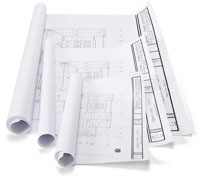 Two major tricks using the large plotter printer ( small file size)…One you must save the file as GRAY SCALE and SIZED 5500 PIXELS ..THEN .. SAVE AS A PDF ... this type of printer loves PDFs .. 50 megabytes or less ... it freezes and stalls with big 50 megs or more image files Its is very important to keep the file size down (saved in gray scale) .. and saved as PDF ..it will go through the machine fast .A very large 36" x 78" - 150 DPI B&W - 5500 PIXELS - PDF print file should be about 30 -50 megabytes If it is much larger you are doing something wrong.
Two major tricks using the large plotter printer ( small file size)…One you must save the file as GRAY SCALE and SIZED 5500 PIXELS ..THEN .. SAVE AS A PDF ... this type of printer loves PDFs .. 50 megabytes or less ... it freezes and stalls with big 50 megs or more image files Its is very important to keep the file size down (saved in gray scale) .. and saved as PDF ..it will go through the machine fast .A very large 36" x 78" - 150 DPI B&W - 5500 PIXELS - PDF print file should be about 30 -50 megabytes If it is much larger you are doing something wrong.
The printer is designed for architectural print outs ( thin xerox paper) that is what works best for wheat pasting. Done in the self-service area, or a Kinko's team member can assist you .
Many times this type of printer is called a plotter printer.
Ask for … Over Sized Black and White Printing Services for engineering prints and architectural plans. The printer is 36"inches wide (91.4 cm) and can go long as needed.
Recommended Image Dimensions :
Portrait 36in width x 48in high (91.4 cm width x 121.9cm high)
Landscape 48in width x 36in high ( 121.9cm width x 91cm high) Resolution: 150-200 DPI or 5500 pixels roughly.(5500 pixels on the short side of the image)Color Mode set to GRAYSCALE !! ( grayscale reduces the file size tremendously then they are very easy to send)
(This jpg file should be 2- 4 megabytes closed (compressed) Opened 40-60 megs (uncompressed)
Very easy to send by email ( if saved in gray scale )
XEROX paper is popular and works well for many reasons:
The paper is thin and absorbs the paste well mounts into uneven surfaces well.The print does not smear or run when wet ..it is carbon based and holds up well long term in weather and direct sun. Does not fade very fast in direct strong UV sunlight.
Making Wheat Paste Glue
Wheat paste is a very simple glue that will cost you under a buck a gallon to make. It's just flour water and dash of sugar.
Tools needed
Drywall pale or buckets
Large sponges and rags Cheap plastic brooms work great Some people use old mop heads Some people use paint rollers
Some people use a electric drill with paint mixing tool.Many just use your hands and sticks.
White bleached flour ( some use cornstarch)Dash of White SugarWater
MIX FLOUR AND WATER WITH A DASH OF SUGAR TILL BETWEEN HEAVY CREAM AND PANCAKE BATTER. SIMPLE
I have been successful without heating paste at all and just mixing well with drill mixer
Many people heat the paste while mixing or at least add hot water.
Some people will add dollop of clear acrylic floor shine in the mix ..or us it as a final wipe to clean the paste off the front.
Some people make one thick back paste for the wall first
And one thin paste finish wipe over the top letting it absorb through meeting the paste in the back.
It is applied to the backside of paper then placed on flat surfaces, particularly concrete and metal as it doesn't adhere well to wood or plastic. Cheap, rough paper such as newsprint, works well, as it can be briefly dipped in the mixture to saturate the fibers.When hanging unauthorized billboards or signage, to reduce the danger of being apprehended, wheatpasters frequently work in teams.
Use some cornstarch instead of flour. It makes it clear instead of that nasty brown-ish color.Add 1 cup cornstarch for every 2 cups of water.
Resolution: 150-200 DPI or 5500 pixels roughly.
(5500 pixels on the short side of the image)
Color Mode set to GRAYSCALE !!
( grayscale reduces the file size tremendously then they are very easy to send)
(This jpg file should be 2- 4 megabytes closed (compressed) Opened 40-60 megs
(uncompressed)
Very easy to send by email ( if saved in gray scale )
NOTE- XEROX paper is popular and works well for many reasons:
The paper is thin and absorbs the paste well mounts into uneven surfaces well.
The print does not smear or run when wet .. and hold up well long term in weather and direct sun. Does not fade very fast in direct strong UV sunlight.
Making Wheat Paste
Wheat paste is a very simple glue that will cost you under a buck a gallon to make. It's just flour water and dash of suger.
Tools needed
Drywall pale or buckets
Large sponges and rags
Cheap plastic brooms work great
Some people use old mop heads
Some people use paint rollers
Some people use a battery drill with paint mixing tool.
Many just use your hands
White bleached flour ( some use cornstarch)
White Sugar
Water
MIX FLOUR AND WATER WITH A DASH OF SUGAR TILL BETWEEN HEAVY CREAM AND PANCAKE BATTER. SIMPLE
I have been successful without heating paste at all and just mixing well with drill mixer
Many people heat the paste while mixing or at least add hot water.
Some people will add dollop of clear acrylic floor shine in the mix ..or us it as a final wipe to clean the paste off the front.
Some people make one thick back paste for the wall first
And one thin paste finish wipe over the top letting it absorb through meeting the paste in the back.
It is applied to the backside of paper then placed on flat surfaces, particularly concrete and metal as it doesn't adhere well to wood or plastic. Cheap, rough paper such as newsprint, works well, as it can be briefly dipped in the mixture to saturate the fibers.
When hanging unauthorized billboards or signage, to reduce the danger of being apprehended, wheatpasters frequently work in teams.
Use some cornstarch instead of flour. It makes it clear instead of that nasty brown-ish color.
Add 1 cup cornstarch for every 2 cups of water.
Large-format copying, scanning and digital printing. Copy black & white plan sets and photo printouts
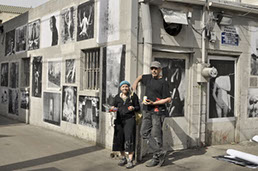
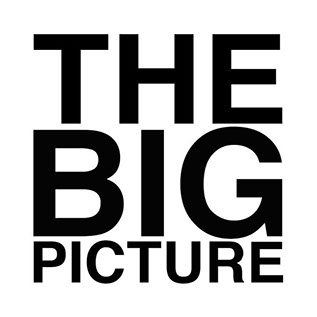
THE BIG PICTURE
IMAGES INSIDE, OUT THE DOOR, DOWN THE ALLEY AND AROUND THE WORLD
This show of grand scale contemporary photography exposes the possibility of images as art via email instantly exchanged globally and blown up to large mural proportions. Images gathered from photographers around the world will be expanded as large Xerox prints and displayed inside galleries as well as posted in approved outdoor locations throughout the city of Denver and sister cities around the globe.
The Big Picture ambassadors are gearing up to help this grand street art exchange happen. Paris France, Bondi Australia, Dozens of cities across the US including LA, Portland, Denver, NYC and Brooklyn NY, Venice Italy, Vienna Austria, Berlin Germany, London England, Bulgaria, Mexico City, Buenos Aires Argentina. Stay tuned.
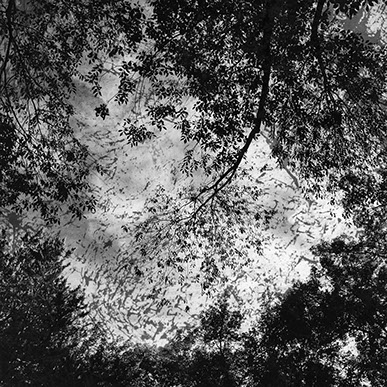
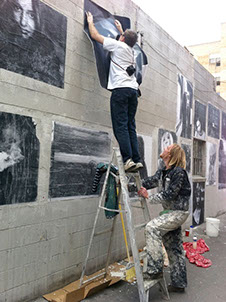
The wall is getting better and better across from the Denver Art Museum
Posted by The BIG PICTURE Colorado on Sunday, June 14, 2015
Because of all the constant historical rains we are way behind getting work up. But we are moving forward and finishing City O and the Buff...this one of our favorite and busy highly traveled spots.
Posted by The BIG PICTURE Colorado on Friday, May 29, 2015
Greg virtually works in Hollywood and lives in the Sonoran Desert.
SUBSCRIBE TO OUR MAILING LIST TODAY!